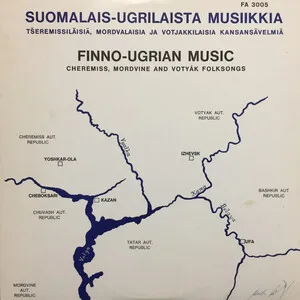Mordvin folk music is the traditional music of the Erzya and Moksha (collectively known as the Mordvin or Mordvins), a Finno-Ugric people of the middle Volga region in present-day Russia.
It is primarily vocal and communal, featuring robust unison or gently diverging heterophony as well as simple two-part polyphony built around drones and parallel motion. The song repertory spans calendar and ritual songs, work songs, wedding laments, lullabies, historical narratives, and dance tunes.
While a cappella group singing remains central, instruments heard in modern performance include regional flutes and hornpipes, frame drums and tambourines, the Russian garmon’ (button accordion), and occasionally plucked zithers and balalaika-family instruments. Lyrics are typically in Erzya or Moksha, with highly alliterative lines, nature imagery, and refrain-based structures.
Mordvin folk music descends from the ritual, agrarian, and domestic song practices of the Erzya and Moksha peoples, whose musical life was transmitted orally for centuries. Communal singing—especially among women—favored drone-backed unison and simple polyphony with narrow-ranged melodies, refrains, and work-paced rhythms.
Systematic documentation began in the 1800s as ethnographers and music collectors wrote down lyrics and melodies and, later, made early recordings. These collections preserved a wide range of functional genres (calendar songs, laments, wedding cycles) and highlighted the use of Erzya and Moksha languages.
In the Soviet era, professional folk choirs and state ensembles standardized regional repertories for the stage. Mordvin materials were arranged for large mixed choirs and folk-orchestra forces (garmon’, balalaikas, winds), which popularized the sound nationally while smoothing out some local idiosyncrasies.
From the 1990s, revivalist and research-driven groups reconstructed older vocal techniques, dialectal texts, and local instruments. Ensembles such as Toorama and OYME championed fieldwork-based performance, collaborations with scholars, and international touring. Recent projects span faithful reconstructions to hybrid works that connect Mordvin song with world-fusion and contemporary folk aesthetics.


%20-%20Finno-Ugrian%20Music%20(Cheremiss%2C%20Mordvine%20and%20Voty%C3%A1k%20Folksongs)%2C%20Cover%20art.webp)





